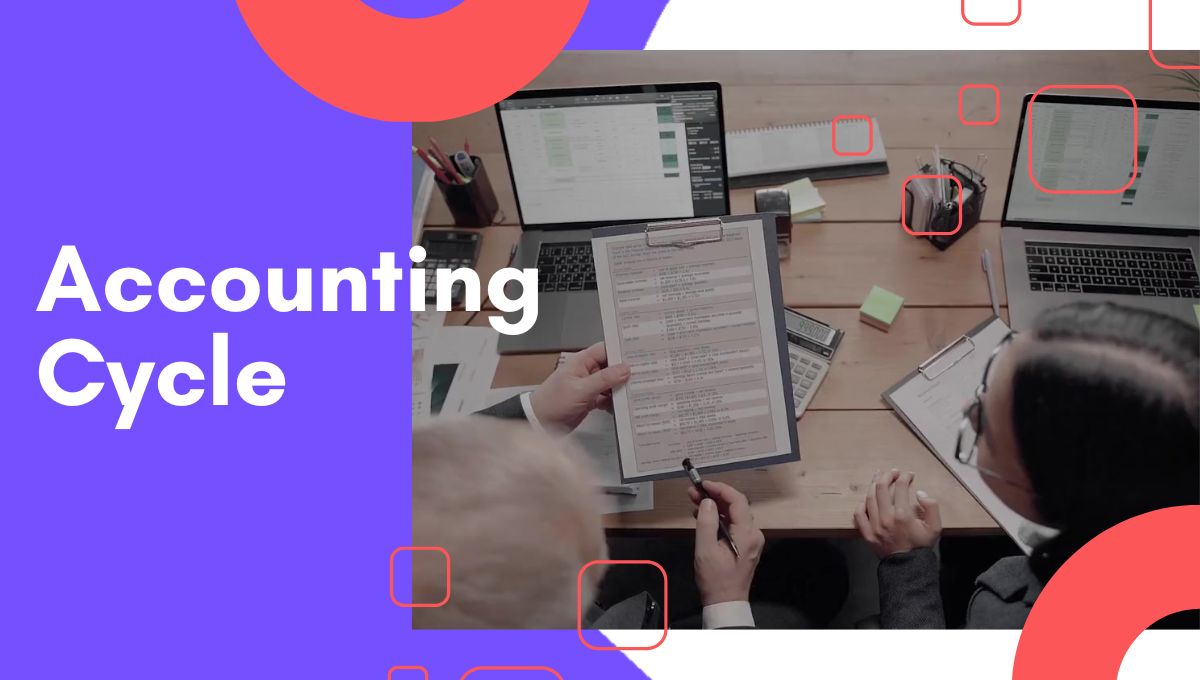Do you ever feel like accounting terms are just a blur of jargon?
Journal, ledger, trial balance—they sound daunting, don’t they?
But things begin to click once you understand how these puzzle pieces fit together in the accounting cycle. Whether you’re an aspiring accountant, a business owner, or preparing for an ACCA course, understanding these basics isn’t just useful—it’s essential.
What Is Accounting Cycle?
The accounting cycle is a process that accountants follow in recording, classifying, and summarising financial transactions. It ensures accuracy and consistency when preparing financial statements.
But let’s not just settle for definitions. Imagine you run a shop in Mumbai and record every sale, expense, and refund. Without a structured cycle, chaos would ensue.
Accountants record and process information about economic entities, such as businesses and corporations — a practice known as accountancy. The accounting cycle does one thing brilliantly: it turns everyday business transactions into understandable and trustworthy financial reports.
Accounting Cycle Steps:
Here are the accounting cycle steps you must know:
- Identifying Transactions – Recognising every financial activity.
- Journal Entries – Recording transactions chronologically.
- Posting to Ledger – Sorting the data into accounts.
- Trial Balance Preparation – Checking if debit = credit.
- Adjustments – Accounting for accruals and deferrals.
- Adjusted Trial Balance – Double-check before final statements.
- Financial Statements – Creating balance sheets, P&Ls, etc.
- Closing the Books – Resetting for the next cycle.
Missing one of these, you might end up with misleading results.
Journal, Ledger, and Trial Balance: The Core Trio
Let’s break this down.
Think of these three as a story:
- The journal is your diary.
- The ledger is your organised notebook.
- The trial balance is your reality check.
Journal: The First Draft
It all begins with the journal. Each transaction is recorded with the date, account affected, amount, and a brief description. This is often called the book of original entries. It’s like jotting down every sale or expense before anything gets formal.
Ledger: Sorting the Chaos
After recording everything in the journal, you transfer the entries to the ledger—this step is generally called posting. In the ledger, you group all related entries together. For example, you list all sales under the Sales Account. This helps you track balances easily.
A clean ledger helps you quickly answer questions like, “How much did we spend on office rent last year?”
Trial Balance
Now, how to prepare trial balance?
Simple:
- Add up all ledger balances.
- Split them into debit and credit columns.
- Total them. If both sides match, your accounts are balanced.
This step checks the arithmetic accuracy of your entries.
Basics of Financial Accounting: Why It Matters
The basics of financial accounting go beyond textbooks. It teaches discipline, attention to detail, and structured thinking. These principles underpin every business decision—from funding to expansion.
According to a report by Accounting Today, 58% of organisations have recognised the advantages of moving to the cloud and now use cloud-based accounting systems. This highlights the growing significance of cloud technology in the accounting sector.
| Concept | What It Means |
|---|---|
| Recording Transactions | Writing down every financial activity, like income or expenses. |
| Double-Entry System | Every transaction gets recorded twice – once as a debit and once as a credit. |
| Journal | You write all transactions like a daily financial diary. |
| Ledger | Organised record of transactions, sorted by category (e.g., rent, sales). |
| Trial Balance | A quick check to make sure total debits and credits match. |
Fixed Income Securities in the Accounting Context
While mastering journal-to-trial balance, it’s also vital to grasp fixed income securities. These instruments, like bonds and debentures, generate consistent returns. They often appear in company portfolios and affect journal entries.
What Are Fixed Income Securities?
Fixed-income securities are investment tools that offer fixed returns over time. This includes government bonds, corporate debentures, and more. Understanding them is key to asset management and long-term planning.
Fixed Income Securities in India
In India, fixed income securities are popular among conservative investors. Government bonds, PPFs, and NCDs are common choices. Accountants must know how to record these and adjust for interest earnings.
Types of Bonds and Debentures
- Government Bonds: Safe but lower returns
- Corporate Bonds: Higher risk, higher reward
- Convertible Debentures: Convert into equity shares
If you’re pursuing a banking and finance course, this knowledge is indispensable. Every accounting professional must link journal ledger trial balance to business decisions. Imagine you’re presenting a budget to stakeholders. If your trial balance is off, your credibility is at risk.
Understanding the accounting cycle doesn’t have to feel overwhelming. With the right guidance, clear steps, and real-world examples, you can master even the most technical aspects, like journal ledger trial balance or fixed income securities in India.
Whether you’re pursuing a professional banking and finance course, brushing up on the basics of financial accounting, or enrolling in the ACCA course at Imarticus Learning, you’re investing in clarity, confidence, and career readiness.
Advance Your Global Accounting Career with ACCA at Imarticus Learning
The Association of Chartered Certified Accountants UK is one of the world’s most prestigious and recognised accountancy bodies. This structured accounting programme is the oldest in the world since it progresses through three stages, from knowledge development to skill acquisition and ending with professional competence.
The educational support at Imarticus Learning extends to unlimited examination passes for students. ACCA learners can repeat the complete course and all its sessions free of charge until they successfully pass the syllabus. The institute places students at the center of its teaching methodology as it demonstrates trust in its educational standards and student assistance programmes.
The professional level of students receives special placement training through a bootcamp programme. The institution provides job placement assistance to students through comprehensive services that address curriculum vitae building, teach essential competencies, organise training for examining interviews, and teach personal development techniques. The programme grants participants valuable internship experiences at highly regarded corporations to develop their professional abilities beyond exam success into real finance career success.
Enrol in the ACCA course at Imarticus Learning today and secure your future with guaranteed success.
FAQ
- What is accounting cycle, and why is it important?
The accounting cycle is a step-by-step process for recording and summarising financial transactions. It ensures accuracy and consistency in reports.
- What are the key accounting cycle steps?
Steps include identifying transactions, journalising, posting to the ledger, preparing trial balances, making adjustments, and generating financial statements. - How are journal, ledger, and trial balance connected?
Entries go from journal (initial record) to ledger (classified) to trial balance (accuracy check). Each step builds on the last. - How to prepare trial balance in accounting?
It verifies that total debits equal credits, confirming accuracy before preparing financial statements. - What are common fixed income securities in India?
Examples include government bonds, PPFs, and corporate NCDs—essential for conservative portfolios. - Why are journal ledger trial balance steps critical?
They form the backbone of financial reporting. Skipping any step risks errors and misstatements. - Can Imarticus Learning help with accounting basics?
Yes. The banking and finance course and ACCA course cover these topics thoroughly with industry-relevant examples.









